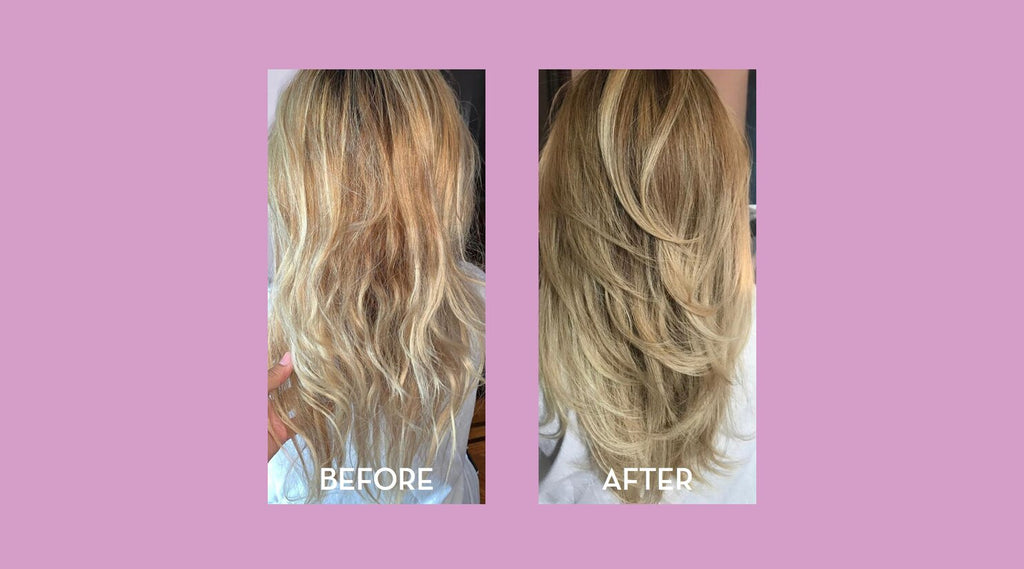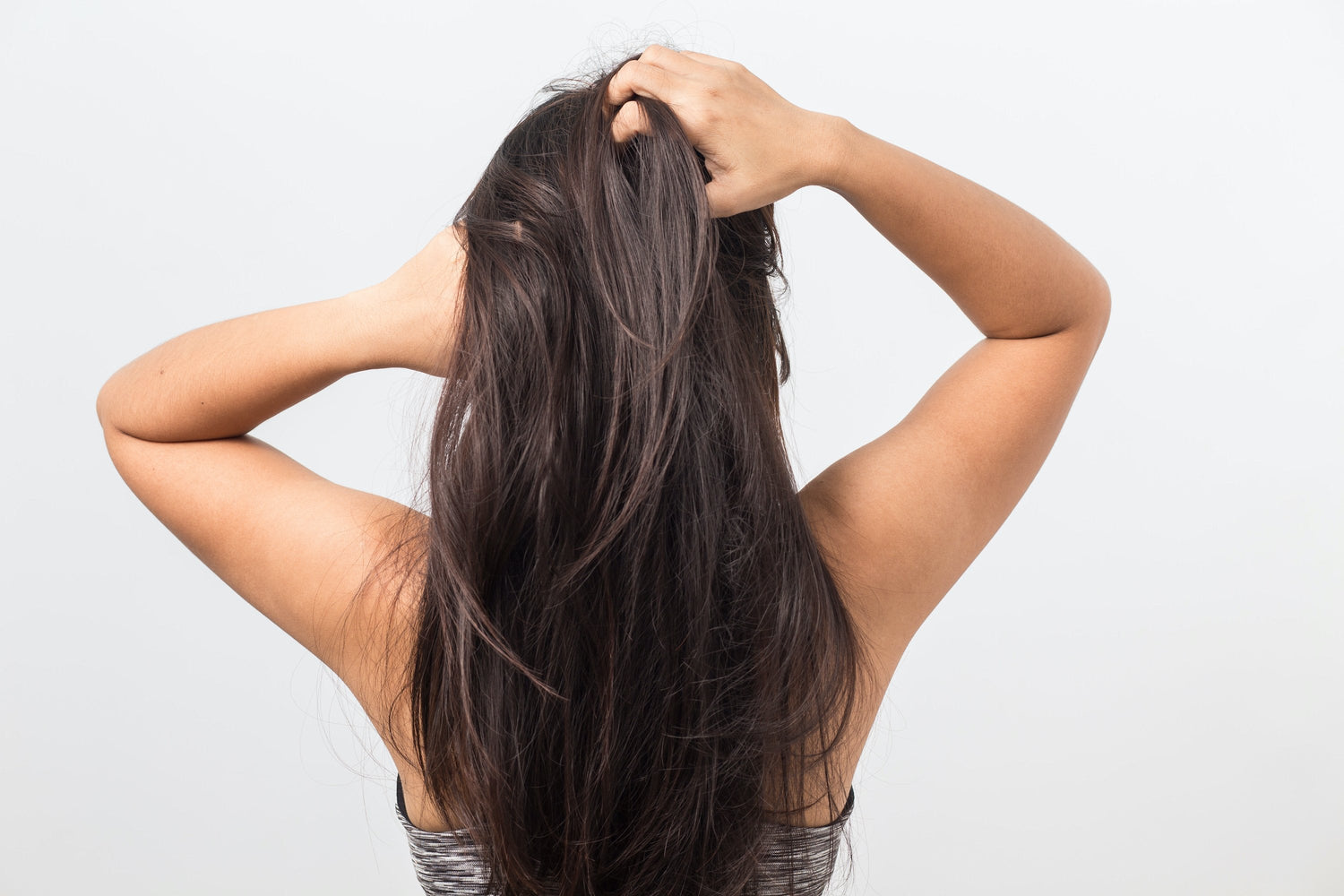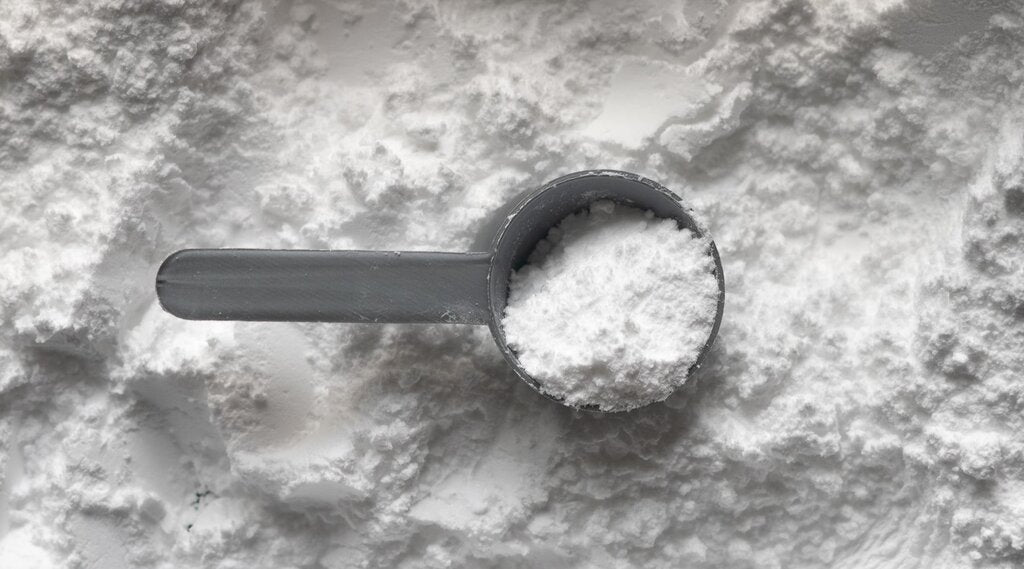Bond building treatments, such as Olaplex, are getting a lot of buzz in the hair community, especially with people who have fried hair and damaged hair from excessive bleach. Have you ever wondered what bond building treatments do and if you need one? Read on to find out what a bond building treatment is and meet the entirely new bond builder, biothiols for hair with antioxidant scalp benefits.
First up, a bit of basic hair chemistry.
Hair is comprised of a lot of keratin, over 90%. Hair keratin is protein made up of long polypeptide chains crosslinked to one another by mean of disulfide linkages. The keratin is high in disulfides, particularly from the amino acid cysteine. Cysteine is special because it contains a sulfur (S) atom. Normally, two sulfurs will join to form a disulfide bond (S-S). These disulfide linkages give hair its strength, structure, and act to hold the hair in a permanent shape.
Why are disulfide crosslinking important?
If you’ve been yearning for a new hair color or looking to change up your hair’s structure, say you have stick straight hair and dream of going curly (or vise versa), you’ll start this hair transition by purposely disrupting the bonds. Disrupting disulfide bonds is also necessary when allowing for new hair colors. When hair is permed or straightened, these bonds are deliberately broken into two SH groups, aka free thiols (remember this word). Hair bonds are then reformed after the hair is pulled into its new shape. Reforming these bonds typically takes a few days - that’s you shouldn’t wash your hair for at least two days after perming (thanks for the heads up, Elle Woods). Chemical treatments like bleaching and hair coloring break bonds too, but even if you’re not into getting your hair lightened, colored, permed, or relaxed, other things can break disulfide bonds. Products with high pH or containing lye, hair styles requiring repeated heat exposure and exposure to sunlight have the potential of breaking disulfide bonds. The problem is when too many bonds are left unbroken, hair becomes weak and damaged. Since these crosslinks are partially responsible for your hair’s overall strength and shape, it’s important to manipulate the bonds by reconnecting broken disulfide sulfur bonds in the hair. Olaplex is one hair product line offering bond building solutions, but its not the only or best option available.
The science behind how Save Me From restores hair bonds.
Save Me From’s Fenugen technology is a source for important biothiols that are capable of rebuilding disulfide bonds and protecting hair from oxidative damage. This is possible through a chemical reaction called thiol-disulfide exchange, a process where an original disulfide bond is broken (such as in a chemical treatment) and when a new sulfur atom is introduced, a new disulfide bond can be reformed.
How to repair chemically damaged hair with thiol-disulfide exchange.
After a chemical hair treatment, how do you fix damaged hair? Disulfide bonds in keratin can participate in a disulfide exchange reaction with another thiol. The disulfide exchange process involves an attack of the thiol, cysteine, in a chemical treatment. This attack breaks apart the -S–S- hair bond, but when a new thiol is introduced, a new disulfide can crosslink with a portion of the original disulfide bond. This exchanged crosslink helps to strengthen the hair during chemical treatments. The original disulfide bond is broken, and a new sulfur atom is released to reform the disulfide bond, giving hair more luster, more silkiness better looking curls and combability. One effective thiol for bond-building also happens to be the effective antioxidant, glutathione.
 What is glutathione?
What is glutathione?
Aside from its bond-building role in the thiol-disulfide exchange process, glutathione (GSH) is a simple sulfur compound and a tripeptide (L-γ-glutamyl-L-cysteinyl-glycine) found in every cell in the body. Glutathione is a sulfur-contain tripeptide capable of restoring bonds within damaged hair through a process called thiol-disulfide exchange. It is an antioxidant capable of many important functions. When glutathione levels are low, researchers have found a link elevated levels of oxidative stress and the onset of some diseases, such as psoriasis (According to the Journal of Clinical Aesthetic Dermatology).
What are the biothiols in Fenugen?
Biothiols are biologically important, bioactive antioxidants that can protect the cells from oxidative damage. Biothiols, such as cysteine (Cys), homocysteine (Hcy), and glutathione (GSH) perform vital physiological functions, such as maintaining redox homeostasis, activating gene expression, and mitigating damage caused by free radicals and toxins. Abnormal levels of biothiols are thought to be involved in many human diseases, including cancer, Alzheimer's and Parkinson's diseases, and AIDS.
Vegetables, fruits, and spices naturally possess a wide variety of phytochemicals. Top phytochemicals are polyphenols and flavonoids, but research has shown with biothiols, antioxidant benefits can be enhanced, and spices are a potent source.
For example, fenugreek seeds are an important source of biothiols. Comparatively, fenugreek (Trigonella foenum graecum L.) contained a concentration of 519 nM/g dry weight of the biothiol glutathione, a higher concentration than turmeric (Curcuma longa) at 41 nM/g of dry weight. Fenugreek is the main active ingredient in Save Me From’s Fenugen technology, a complex proven to be five times more potent in its phytocompound content.
Is glutathione good for hair?
Yes. Glutathione is good for the hair and the scalp health. Not only is glutathione effective for strengthening hair by crosslinking disulfide bonds through thiol-disulfide exchange, but glutathione may also be beneficial at reducing inflammation, and helping to prevent folliculitis, an itchy scalp and hair loss. Maintaining proper glutathione levels with age may also delay greying hair.
How to stop hair breakage at home?
Yes. Save Me From hair treatments are concentrated bonding creams that transition into a silky serum when you blend them with water. Although they are used in salon treatments to rebuild bonds after a color treatment, they are formulated for home use. Because results improve with continued use and good scalp health requires ongoing nourishment, we recommend applying a small dose daily.
Additional bond-building benefits are included within Save Me From’s Bond Reboot. Bond Reboot includes a specialized form of creatine with the ability of relinking ionic bonds. Ionic bonds break when hair is wet when hair is in its most fragile state. By restoring ionic bonds, hair can be stronger even when wet, helping to eliminate hairs in the drain. Our Reboots help reduce split ends and breakage while it nurtures new hair that’s more resistant to future damage.
Conclusion: Dual Action Biothiol for Bond Building and Scalp Health
The next generation of hair bonding treatments for damaged hair not only restore multiple types of bonds, including both covalent bonds and ionic bonds, but also offer bioactive antioxidants. These antioxidants offer benefits for both the hair and the scalp. Save Me From’s Fenugen is five times more concentrated in fenugreek seed’s phytonutrients, including the biothiol, glutathione. With Fenugen, damage hair gets the nourishment it needs to transform – immediately helping to restore bonds to help stop hair breakage while being a treatment for dry hair and a dry scalp.
The Ayurvedic Spice That's Changing Everything
It's worth mentioning the hair reparative benefits of Fenugen. Inspired by Ayurvedic medicine, we've harnessed the fenugreek's rich phytonutrients including medium and long chain fatty acids, terpenoids, polyphenols, phospholipids and vitamins A, C and B variety vitamins and paired these with bio-boosters like ubiquinone (also known as Coenzyme Q10 for hair), organic karanja (also known as pongamia) and medicum chain triglycerides (MCT’s derived from coconut). Through a patented eco extraction process, we've magnified these phytonutrients into our clinically proven technology. Fenugen possesses the rich nutrients of fenugreek seeds in a complex 5x more potent in polyphenols. These nutrients include Vitamin A, B Vitamins, Vitamin C and more. Fenugen is a good source for important biothiols that protect your hair from oxidative damage and rebuild disulfide bonds. Bleach, color, chemical services & heat cause internal disulfide bonds to break, leaving your hair weak, brittle & damaged. With Bond Reboot’s creatine, ionic bonds are also restored, making the hair stronger even when wet. Our Reboots quickly reduces split ends and reduce hair breakage while nurturing new hair that’s more resistant to future damage. With consistent, long-term use, hair bonds are rebuilt, hydration is restored helping to reduce frizz, the scalp is energized and nourished from within allowing hair that's more resistant to damage to emerge. Rooted in Ayurveda, our Fenugen is clinically proven to transform hair from tip to root, inside and out.
***
Fan H. Yan G. Zhao Z. Hu X. Zhang W. Liu H. Fu X. Fu T. Zhang X. B. Tan W. Angew. Chem., Int. Ed. 2016;55:5477–5482. doi: 10.1002/anie.201510748.
Zhang Y. Wang X. Bai X. Li P. Su D. Zhang W. Zhang W. Tang B. Anal. Chem. 2019;91:8591–8594. doi: 10.1021/acs.analchem.9b01878.
Yin C. X. Xiong K. M. Huo F. J. Salamanca J. C. Strongin R. M. Angew. Chem., Int. Ed. 2017;56:13188–13198. doi: 10.1002/anie.201704084.Meister,A., & Anderson,M.E. (1983). Glutathione. Annual Review of Biochemistry, 52, 711–760.
Jones, D. P., Coates, R. J., Flagg, E. W., Eley, J. W., Block, G., Greenberg, R. S., et al. (1992). Glutathione in foods listed in the National Cancer Institute’s Health Habits and History Food Frequency Questionnaire. Nutrition and Cancer, 17, 57–75.
K.R. Manda et al. (2010). Biologically Important thiols in aqueous extracts of spices and evaluation of their in vitro antioxidant properties. Food Chemistry, 117, 589-593.
Chakravarthi S, Jessop CE, Bulleid NJ. The role of glutathione in disulphide bond formation and endoplasmic-reticulum-generated oxidative stress. EMBO Rep. 2006 Mar;7(3):271-5. doi: 10.1038/sj.embor.7400645. PMID: 16607396; PMCID: PMC1456887.
Chen M, Ren X, Dong L, Li X, Cheng H. Preparation of dynamic covalently crosslinking keratin hydrogels based on thiol/disulfide bonds exchange strategy. International Journal of Macromolecules, 182, 1259-1267.
Cosmetics Science and Technology, E Sagarin Ed. vol. 2, p. 230, (1972) Wiley Interscience.







